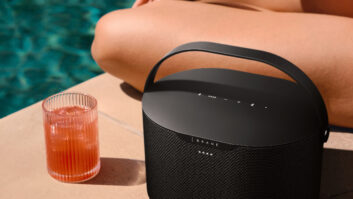The “Standard” placement of left, right, and center speakers in a home theater system is pretty well established — and you’ll find them in pretty much the same positions whether you’re in a dealer’s showroom or your friend’s living or media room. But surround speakers provide a more difficult placement problem. And, often, “proper” placement depends on whether you’re an enthusiast at home or a dealer attempting to dramatically demonstrate home theater and the excitement of surround.
A dealer has little time for subtlety and nuance. A dealer has your presence for a brief period of time — and your attention for even less. His or her immediate concern is, “How do I make my customer understand and accept the benefits of a particular product or technology?”
At home, the enthusiast’s situation is different. The enthusiast asks the question, “How can I recreate the movie theater’s immersive experience in my room?” While some moviegoers find the surround aspects of movie sound to be distracting, far more find that the effects add to the “reality” of the experience. The movie viewer — in the theater or at home — has a few hours rather than a few minutes to “hear” and appreciate the value of surround.
So “proper” surround speaker placement varies, depending upon the effect to be achieved. A dealer will most likely place the surround speakers at ear level — for customers either sitting or standing, depending on the particular demonstration situation. This puts the speakers at the most sensitive height, where the effect is most noticeable and dramatic.
At home, it is the opposite; the enthusiast wants to be enveloped in the surround sound-field and not be able to distinguish the source. For that, a very diffuse source, one that is hard to locate, is optimal. If the speakers are near the floor or near the ceiling (and particularly if they are out of sight while looking at the screen), it is harder to pin-point a sound source. Omnidirectional or dipole speakers (with the null aimed at the listeners) give the best diffuse sound sources.
The dealer has a real conflict: to demonstrate speakers that will provide the best “at home” experience, or the one that will deliver the most dramatic and immediate impression. This conflict was probably best demonstrated by the early THX surround specifications that required dipoles for the surrounds — and disappointed at the retail level.









